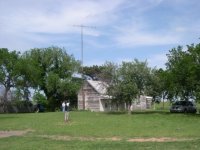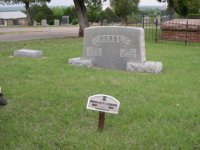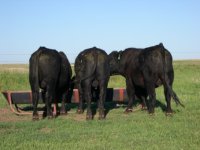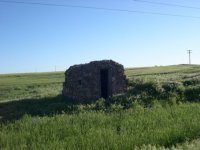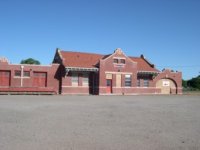2nd paper review compares bovigen system vs ingenity
the two panels share the two same calpain dna modification, called a snp,(single nucleotide polymorphism, a G or a C)
each has a snp in the calpastatin gene, but at different locations, the bovigen location appears to be in the 3' untranslated region, ie the part that doesn't get translated into a protein, while the ingenity is a snp in the exonic (within the region that gets translated into a gene).
i hadn't known that before. interesting, that a non translated portion of a gene in the downstream region after the gene is made can have a measurable and reproducible effect. that doesn't mean it isn't regulated there in it's expression. most classical models have the regulatory region upstream.
the quality grade markers 1 and 2 from bovigen. 1 is a snp in the binding sequence for RNA polymerase III upstream from the first exon of thyroglobulin, meaning it potentially affects it's up or down regulation. whether it's up or down, i couldn't determine.
feed, harvest date and management conditions were held the same.
some combinations of alleles were rare, 0.5%
one quality grade marker was almost fixed in the hereford group
one quality grade marker was associated with a higher number of carcasses grading choice or prime, but is not associated with higher marbling. that is counterintuitive to me and i don't understand what that means.
the tenderness markers seem unrefutable, but require muscle decay post mortem
TG5 is present in most waygu cattle and seems to have the highest effect on marbling. it is intermediate in presence in bos taurus and least present in bos indicus.
the T1 gene from bovigen seems to have little effect in indicus cattle suggesting a muscle composition difference?
the tenderness from the genes is greater than the tenderness between different qualtiy grades such as between select and low choice and is even greater the higher up the quality scale you go.
i kinda lost track of all the allele combinations but will summarize that later. this paper has lots of tables which take time to deciper. the numbers are slightly different between the two companies, but seem close. probably have to look this over over the weekend to make sense of all the combinations. interesting to note that herefords have a high prevalence of one of the tenderness genes. in general, in my experience in college, they were harder to marble than other breeds, but if one measures the steaks with shear force before distributing that product to a higher priced market segment, a more favorable experience is realized, in spite of the marbling, which some customers may not want. this is what safeway does with it's rancher's reserve product, which i have sampled vs grass fed beef products and find the safeway product much more enjoyable than the grass fed product, which can be extremely tough sometimes in spite of careful cooking with lower temperatures. in general, i find the taste of the grass fed product better, but most people i have cooked for don't and they are also the same one's who don't like venison, elk etc.

